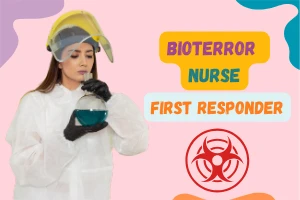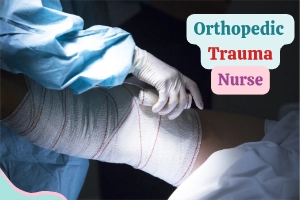Cryotherapy Nursing: The Hidden Risks You Need to Know
Published: 8 Jan 2025
Did you know nurses play a vital role in making cryotherapy safe and effective? In this article, you’ll explore how they support patients, manage treatments, and ensure recovery.
Dive in to learn how nurses shape the cryotherapy experience and its incredible benefits!
What Is Cryotherapy?
Cryotherapy uses extreme cold, typically liquid nitrogen, to treat abnormal tissues, reduce inflammation, and relieve pain. Healthcare professionals use it in various fields, including oncology, dermatology, orthopedics, and sports medicine.
The Role of Nurses in Cryotherapy Care

Nurses play a crucial role in ensuring that patients receive safe and effective cryotherapy treatments, from preparation to post-treatment care.
Patient Preparation
- Nurses conduct initial assessments to determine, based on a patient’s medical history and current health condition, whether they are eligible for cryotherapy.
- They educate patients about the cryotherapy procedure, explaining external and internal treatment methods.
- Nurses clearly explain the risks, benefits, and what to expect after the procedure to ensure patients are well-informed.
During Cryotherapy
- Nurses closely monitor patients for discomfort or adverse reactions during the procedure.
- They assist healthcare providers in setting up and operating cryotherapy equipment, such as nitrogen chambers, ensuring the procedure runs smoothly and safely.
Post-Treatment Care
- Nurses provide detailed aftercare instructions, including:
- Wound care to prevent infections and ensure proper healing.
- Guidance on when it’s safe to shower after cryotherapy to avoid irritation or complications.
- Instructions on managing scabs and other side effects like swelling or redness.
- They also remain vigilant in recognizing complications, such as infections or cases where cryotherapy may not work as expected, and take appropriate action if needed.
This approach to patient care ensures that nurses effectively manage all aspects of the cryotherapy process, prioritizing patient safety and comfort throughout the treatment journey.
Nursing Specializations Linked to Cryotherapy
Nurses play a key role in supporting patients during cryotherapy treatments across various specialties.

Oncology Nursing
- Role in Cryotherapy: Oncology nurses use cryotherapy to treat cancers, such as skin cancer.
- Pre-Treatment: Educate patients on the procedure and potential side effects.
- During Treatment: Monitor patients for discomfort and assist healthcare providers.
- Post-Treatment: Manage patient recovery, ensuring proper wound care and monitoring for complications.
Dermatology Nursing
- Role in Cryotherapy: Dermatology nurses assist in treating skin conditions like warts, moles, and lesions.
- Pre-Treatment: Prepare patients by explaining the process and benefits of cryotherapy.
- During Treatment: Help administer cryotherapy and provide comfort to the patient.
- Post-Treatment: Provide detailed aftercare instructions, including wound care and infection prevention.
Orthopedic and Pain Management Nursing
- Role in Cryotherapy: Cryotherapy helps manage joint pain and inflammation.
- Pre-Treatment: Educate patients on how cryotherapy will reduce pain and inflammation.
- During Treatment: Monitor patient comfort and assist with positioning during treatment.
- Post-Treatment: Guide patients on managing pain and swelling and watch for potential complications.
In each of these roles, nurses ensure that patients receive safe, effective cryotherapy treatment, provide necessary support, and manage recovery effectively.
How to Become a Nurse Specializing in Cryotherapy
To become a nurse specializing in cryotherapy, you’ll need the right education, certifications, training, and experience.
1. Education
- Get a Bachelor of Science in Nursing (BSN): This is the first step. It covers the basics of nursing, including patient care and medical knowledge.
- Specialize in Relevant Areas: After your BSN, focus on areas like oncology, dermatology, or pain management, where cryotherapy is commonly used.
2. Certification and Training
- Obtain Specialized Certifications: Certifications in oncology, dermatology, or pain management help you understand the conditions treated with cryotherapy.
- Cryotherapy Training: Learn how to use cryotherapy equipment safely, such as cryotherapy chambers and liquid nitrogen.
3. Experience
- Hands-On Practice: Gain experience in clinical settings that use cryotherapy, such as cancer centers or dermatology clinics.
4. Job Opportunities
- Work in Hospitals or Clinics: Look for jobs in hospitals, dermatology clinics, or wellness centers that offer cryotherapy.
By following these steps, you can specialize in cryotherapy and help patients with pain relief, skin conditions, and recovery.
Risks and Ethical Considerations
Cryotherapy carries potential risks, but it offers many benefits when handled properly. Understanding and addressing these concerns is crucial to ensuring patient safety.
Risks
- Skin Damage or Frostbite: Improper use of cryotherapy can lead to skin damage or frostbite.
- Nerve Pain: Incorrect application of extreme cold can result in nerve pain.
- Potential Complications: Patients with medical conditions like diabetes or poor circulation may face more serious complications.
Ethical Aspects
- Informed Consent: Nurses must ensure patients understand the procedure, risks, and benefits before proceeding.
- Safety Protocols: It’s essential to follow established guidelines to prevent harm and ensure patient safety during treatment.
By being mindful of these risks and ethical considerations, nurses can provide safe and effective care to patients undergoing cryotherapy.
Cryotherapy in Nursing: Best Practices
Cryotherapy involves careful management and precise execution. Nurses must be prepared to handle both routine and emergencies.
- Policy and Protocol Development: Nurses should follow established guidelines to minimize risks. These protocols help ensure patient safety and treatment effectiveness.
- Safety and Competency Assessments: Nurses must regularly assess their skills using frameworks like WASP. This ensures they are equipped to handle cryotherapy safely and effectively.
- Equipment Maintenance: Nurses should regularly inspect cryotherapy devices to ensure they are functioning properly. Proper equipment maintenance is critical to avoid complications during treatment.
- Emergency Preparedness: Nurses need to be ready to manage adverse reactions or complications, such as frostbite or skin damage. Prompt action is essential to address any issues quickly and safely.
Conclusion
Cryotherapy is a valuable treatment option for pain, inflammation, and skin conditions. Nurses are essential in ensuring its effectiveness and patient safety throughout the process.
Ready to explore the benefits of cryotherapy? Talk to a healthcare provider today!
Frequently Asked Questions About Cryotherapy
Here are some common questions and answers about cryotherapy to help you better understand this treatment.
Cryotherapy is a medical treatment that uses extreme cold, typically liquid nitrogen, to freeze and destroy abnormal tissues.
It helps treat conditions such as warts, skin lesions, and certain cancers by applying intense cold to the targeted area.
Nurses prepare patients by explaining the cryotherapy procedure, addressing any concerns, and conducting an assessment to ensure they are eligible for treatment.
They also discuss potential risks and benefits to ensure the patient is fully informed.
Cryotherapy is generally safe during breastfeeding, but it’s important for patients to consult their healthcare provider beforehand to ensure there are no specific risks or concerns related to breastfeeding.
It is recommended to wait at least 24 hours after cryotherapy before showering. This allows the treated area to heal and reduces the risk of irritation or infection.
During the session, you will experience brief discomfort from the extreme cold applied to the target area. The procedure is usually quick and lasts only a few minutes. Most people find the discomfort mild and temporary.
To become a nurse specializing in cryotherapy, you need to complete a Bachelor of Science in Nursing (BSN), followed by certification in areas like oncology or dermatology. Gaining hands-on experience through clinical practice is also essential.
Cryotherapy is a non-invasive treatment that can reduce pain, inflammation, and swelling. It is commonly used to treat skin conditions, promote healing, and manage chronic pain without surgery.
If cryotherapy does not produce the desired results, alternative treatments such as laser therapy or medications may be considered. Discussing options with your healthcare provider to find the best treatment is important.
Cryotherapy can cause temporary redness, swelling, or blistering in the treated area. In rare cases, more serious complications, like nerve damage or frostbite, may occur if the procedure is not performed properly.
You should contact your doctor if you experience severe pain, signs of infection, or any unexpected side effects after cryotherapy. It’s essential to seek medical advice if you notice any concerning symptoms.

- Be Respectful
- Stay Relevant
- Stay Positive
- True Feedback
- Encourage Discussion
- Avoid Spamming
- No Fake News
- Don't Copy-Paste
- No Personal Attacks

- Be Respectful
- Stay Relevant
- Stay Positive
- True Feedback
- Encourage Discussion
- Avoid Spamming
- No Fake News
- Don't Copy-Paste
- No Personal Attacks





